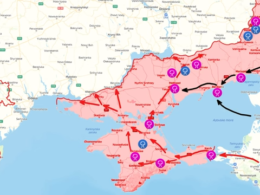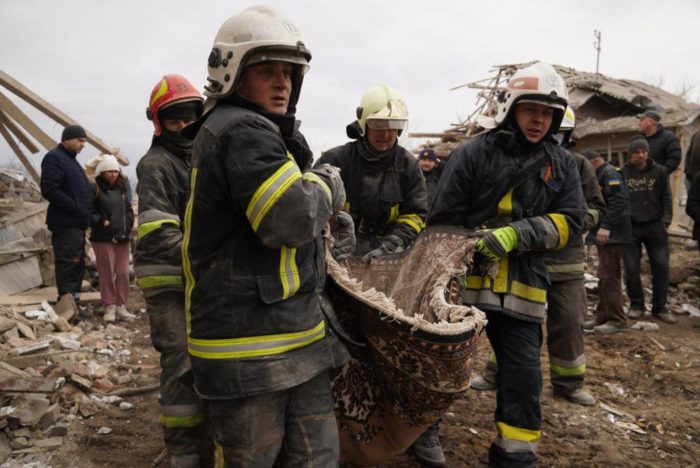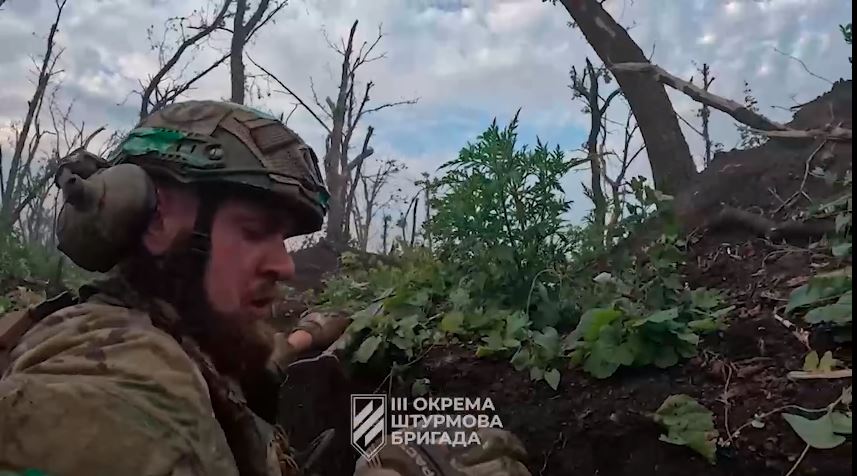According to October 21 Russian offensive campaign assessment by the Washington-based Institute for the Study of War (ISW), Russian forces have started their withdrawal from the west of Kherson Oblast and they "will likely attempt" to blow up the dam at the Kakhovka Hydroelectric Power Plant (HPP) to "cover their withdrawal and to prevent Ukrainian forces from pursuing Russian forces deeper into Kherson Oblast."
ISW says that Russian troops likely intend to continue their withdrawal in Kherson Oblast "over the next several weeks but may struggle to withdraw in good order if Ukrainian forces choose to attack."
- Ukraine’s Operational Command South stated on October 21 that Russian forces are “quite actively” transferring ammunition, military equipment, and some unspecified units from the Dnipro River’s west bank to the east bank via ferries.
- The Command added that Russian forces deployed 2,000 mobilized men to hold the frontlines and are continuing to shell Ukrainian positions, likely in an effort to cover their withdrawal.
- Ukrainian military officials reported that the Russian occupation administration is preparing the evacuation of imported Russian specialists, Ukrainian collaborators, and Kherson’s banking system.
- Russian occupation administration in Beryslav and humanitarian facilities in Kherson City also reportedly ceased operations.
ISW says that Russian forces "will likely attempt to blow up" the Kakhovka HPP dam and will "almost certainly blame Ukraine" for the dam attack.
"Ukraine has no material interest in blowing the dam, which could flood 80 Ukrainian cities and displace hundreds of thousands of people while damaging Ukraine’s already-tenuous electricity supply. Russia, however, has every reason to attempt to provide cover to its retreating forces and to widen the Dnipro River, which Ukrainian forces would need to cross to continue their counteroffensive. Any claims that Russian forces would not blow the dam due to concerns for the water supply to Crimea are absurd. Crimea survived without access to the canal flowing from the Dnipro since Russia illegally invaded and annexed it in 2014 through the restoration of access following Russia’s invasion in February 2022. Russian officials have demonstrated their ability to indefinitely supply Crimea with water without access to the canal," the ISW report reads.
ISW says that the Russian forces are going to try to hold eastern Kherson Oblast "not for the water, but rather to provide a buffer zone that enables the defense of Crimea and prevents Ukrainian forces from getting into artillery range of the peninsula. Russian decisionmakers may believe that blowing the dam will enable them to retain that buffer zone."
Russians have mined & threaten to blow up the Kahovska dam
In 1941, Soviets also blew up the Dnipro dam in Zaporizhzhia to slow down Nazis. Stalin's order killed 1000s of civilians. "Cows were mooing, pigs squealing. People climbing on trees" witness said https://t.co/irYDKd9wma pic.twitter.com/956vJuAsVR
— Euromaidan Press (@EuromaidanPress) October 22, 2022
Meanwhile, Ukrainian President Volodymyr Zelensky warned on October 21 that blowing the dam could cut water supplies to much of southern Ukraine and would pose a serious risk to the Zaporizhzhia Nuclear Power Plant (ZNPP), which lies upstream of the dam and relies on water from the Kakhovka reservoir to cool its facilities.





